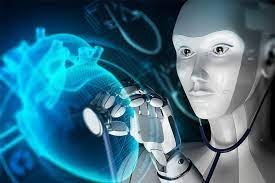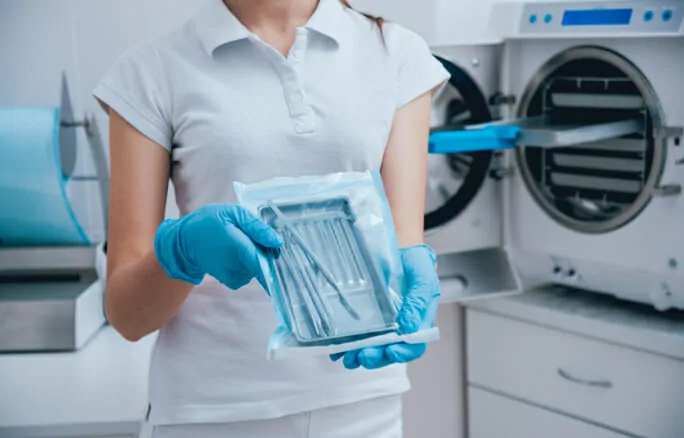Introduction
The integration of robotics into healthcare has revolutionized medical practices, offering unprecedented precision and capabilities. As we delve into the future, the potential of robotics in healthcare continues to expand, promising enhanced patient care, innovative treatments, and transformative changes in the roles of healthcare professionals.
Historical Perspective
Looking back, the journey of robotics in healthcare has been marked by continuous evolution. From the early experiments with robotic surgery to the development of telepresence robots, each step has contributed to the current landscape of medical robotics.
Current Applications
Surgical Robotics
One of the most prominent applications of robotics in healthcare is in the field of surgery. Robots assist surgeons in performing intricate procedures with unparalleled precision, leading to faster recovery times and reduced complications.
Robotic Prosthetics
Advancements in robotics have led to the development of sophisticated prosthetic limbs, offering greater mobility and functionality for individuals with limb loss.
Telepresence Robots
Robots equipped with telepresence capabilities facilitate remote patient monitoring and consultations, bridging geographical gaps and improving access to healthcare services.
Advantages of Robotics in Healthcare
Precision and Accuracy
Robotic systems provide surgeons with a level of precision that is challenging to achieve manually. This accuracy translates to improved outcomes and reduced risks for patients.
Minimally Invasive Procedures
Robot-assisted surgeries often involve smaller incisions, leading to quicker recovery times, less pain, and lower infection rates compared to traditional surgical methods.
Enhanced Patient Care
From medication reminders to monitoring vital signs, robots contribute to comprehensive patient care, ensuring a more proactive and personalized approach.
Challenges and Concerns
Ethical Considerations
As robotics becomes more integrated into healthcare, ethical dilemmas arise, such as the autonomy of robotic decision-making and the responsibility in case of malfunctions.
Cost Implications
The high initial costs of implementing robotic systems pose challenges for healthcare institutions, raising concerns about equitable access and cost-effectiveness.
Integration into Existing Systems
Adopting robotics requires seamless integration into existing healthcare infrastructure, necessitating careful planning and overcoming interoperability issues.
Emerging Technologies
Artificial Intelligence in Robotics
The synergy of artificial intelligence and robotics is unlocking new possibilities, enabling robots to adapt, learn, and make informed decisions in real-time medical scenarios.
Nanorobotics
In the future, nanorobots could revolutionize diagnostics and drug delivery by operating at the cellular or molecular level, offering unparalleled precision.
Robotics in Diagnostics
Robotic technologies are evolving to assist in diagnostics, from early disease detection to real-time monitoring, transforming the landscape of preventive healthcare.
Impact on Healthcare Professionals
Changing Roles and Responsibilities
As robots take on routine tasks, healthcare professionals are evolving into roles focused on complex decision-making, patient interactions, and overseeing robotic systems.
Training Requirements
The integration of robotics necessitates specialized training for healthcare professionals to ensure proficiency in operating and collaborating with robotic technologies.
Patient Perspectives
Acceptance and Trust in Robotic Healthcare
Understanding and addressing patient concerns are crucial for the widespread acceptance of robotic healthcare, emphasizing the importance of building trust through transparency.
Patient Experiences
Exploring patient experiences with robotic healthcare sheds light on the practical implications, challenges, and benefits from the end user’s perspective.
Future Trends
Innovations in Robotic Technology
Ongoing research and development promise continuous innovations, from more agile robotic systems to breakthroughs in human-robot interaction.
Integration with IoT and Big Data
The convergence of robotics with the Internet of Things (IoT) and Big Data enables data-driven insights, facilitating personalized and predictive healthcare solutions.
Personalized Robotic Healthcare
Tailoring robotic interventions to individual patient needs marks a paradigm shift towards more personalized and effective healthcare delivery.
Regulatory Landscape
Current Regulations
Existing regulations govern the use of robotics in healthcare, ensuring safety, privacy, and ethical considerations. However, evolving technologies may require constant updates to regulatory frameworks.
Future Considerations
Anticipating future developments, regulatory bodies need to strike a balance between fostering innovation and safeguarding patient well-being.
Collaboration and Interdisciplinary Approaches
Teamwork in Developing Robotic Solutions
The development of effective robotic solutions requires collaboration among engineers, medical professionals, policymakers, and other stakeholders.
Involvement of Engineers, Medical Professionals, and Policymakers
An interdisciplinary approach ensures that robotic technologies meet the diverse needs of healthcare while addressing ethical, social, and technical considerations.
Global Adoption
Disparities in Adoption Across Countries
The adoption of robotic healthcare varies globally, influenced by factors such as economic resources, infrastructure, and cultural acceptance.
Benefits and Challenges in Diverse Healthcare Systems
Different healthcare systems present unique challenges and opportunities for integrating robotic technologies, emphasizing the need for adaptable solutions.
Case Studies
Successful Implementation Stories
Examining successful cases of robotic healthcare implementation provides valuable insights into best practices and potential pitfalls.
Learning from Failures
Analyzing instances where robotic interventions faced challenges or failures contributes to refining future approaches and avoiding common pitfalls.
Public Perception
Media Influence on Public Opinion
Media portrayal significantly shapes public perception of robotic healthcare, impacting acceptance and generating misconceptions that need to be addressed.
Addressing Misconceptions
Educational efforts are crucial to correct misconceptions, fostering informed public discourse on the benefits and risks of robotic healthcare.
Conclusion
In summary, the future of robotics in healthcare holds immense promise, with ongoing advancements shaping a new era of personalized, efficient, and accessible medical services. As technology evolves, addressing challenges, fostering collaboration, and ensuring ethical considerations will be pivotal in realizing the full potential of robotic healthcare.
FAQs (Frequently Asked Questions)
- Are robotic surgeries safer than traditional surgeries?
- Robotic surgeries offer increased precision and reduced risks, making them a safer option in many cases.
- How do patients feel about being treated by robots?
- Patient experiences with robotic healthcare vary, but transparency and education play key roles in building trust.
- What are the main challenges in adopting robotic technologies in healthcare?
- High costs, ethical concerns, and integration into existing systems pose significant challenges.
- Can robots replace human healthcare professionals entirely?
- While robots can perform certain tasks, human healthcare professionals remain essential for complex decision-making and patient care.
- How is the regulatory landscape adapting to the advancements in robotic healthcare?
- Regulatory bodies are working to update frameworks to ensure the safe and ethical use of evolving robotic technologies.







